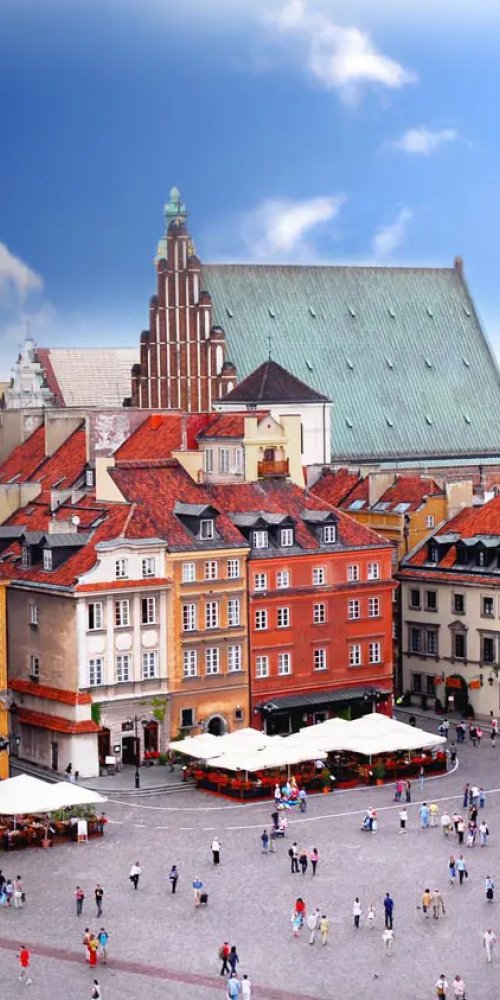

Step into a bustling Warsaw morning. You hear the familiar beep of ticket barriers opening, trams ringing their classic bells as they curve through the streets, and the lively buzz of conversations in half a dozen languages. The scent of fresh coffee from nearby cafés mingles with the distant hum of a metro train sliding silently underground. As you join the flow of commuters, cyclists weaving through traffic, and tourists admiring the old town’s charm, you begin to feel the heartbeat of this dynamic city. Public transport here isn’t just a necessity; it’s a rhythm woven deeply into the fabric of Warsaw’s daily life.

Wondering why you should embrace public transport in Warsaw, PL? Honestly, it’s your fastest, most cost-effective way to explore this sprawling city. When I first climbed the cathedral tower in the Old Town, I relied on the metro and trams to zip across districts quickly, saving both time and zlotys. Tickets are affordable compared to taxis or rideshares - with many hop-on-hop-off tram routes showcasing lively neighbourhoods, parks, and historic sites effortlessly.
But beyond price and speed, Warsaw’s transport system is a green champion. The city prioritises low-emission vehicles and continually expands tram and metro lines to reduce car dependence. If sustainability matters to you, switching from car rentals to trams or the Veturilo bike-share aligns perfectly with greener travel goals.
Lastly, accessibility is baked into the network – from low-floor trams to fully equipped metro stations. This inclusivity ensures everyone, from families with prams to those carrying heavy luggage, can traverse Warsaw’s extensive cityscape with ease and peace of mind.
| Mode | Lines | Peak Frequency | Night Service |
|---|---|---|---|
| Metro Warsaw, PL | 2 | Every 2-3 minutes | Limited (weekend nights) |
| Trams | ~130 | 3-7 minutes | Yes (reduced frequency) |
| Buses | ~150 | 5-10 minutes (main lines) | Comprehensive night network |
| Ferry | 3 main routes | Every 20-30 minutes (Spring–Autumn) | No |
| Bike-share (Veturilo) | ~ 3,000 bikes | Available 24/7 | Yes |
Warsaw’s public transport forms a well-integrated mosaic. Reliable trams and buses stitch the city together, while the metro offers swift underground transit through key hubs. Night services ensure you’re never stranded late, and seasonal ferries delight on warm days. The Veturilo bike fleet complements this network, perfect when you crave fresh air along the Vistula’s banks. Together, these options ensure seamless and varied ways of travel for every visitor.
Rush hours in Warsaw typically hit the streets between 7-9am and 4-6pm on weekdays. Trams and metro lines can become crowded as commuters flood city centres and offices. Planning to travel outside these windows can mean a stress-free ride with seats available and quicker boarding.
Off-peak travel unlocks savings if you’re flexible. Some operators offer cheaper tickets during mid-morning or early afternoon. Plus, you’ll find quieter platforms and friendlier staff, making learning the system less daunting.
That said, Warsaw’s night services run frequent buses rather than trams or metro, so checking routes online ensures you aren’t caught waiting. Also, weekend frequencies drop slightly, so leaving extra time helps.
Pro tip: Downloading real-time transit apps allows you to track vehicle arrivals and avoid the crush during peak times. Combine this with contactless payment methods, and you speed through gates and onto your ride.

Most trams and metro stations are wheelchair accessible, equipped with ramps, lifts, and dedicated spaces. Buses vary, but new models prioritise low floors and easy boarding. Always look for the blue accessibility symbols before boarding.
Parents will appreciate that nearly all public transport modes accommodate prams. Elevators at metro stations assist with strollers, and trams have wide doors and flat floors for smooth entry. During peak times, space may be limited, so travelling off-peak is recommended.
Heading to or from Warsaw’s Chopin Airport? Metro Line M2 connects smoothly with bus shuttle services, and all vehicles allow luggage. However, avoid rush hours for easier boarding with bulky bags. Some newer vehicles feature luggage racks near doors.
Bus tickets can be purchased at vending machines, via official apps, from ticket offices, or directly on board using contactless payment. Remember to validate tickets immediately after boarding for physical tickets.
Key lines include 4, 10, and 17 which run through major districts and sightseeing areas. Tram route maps are available at stops and apps, helping you identify your best options.
Yes, travel passes are valid on metro, trams, buses, and Veturilo bikes, making them versatile and convenient for unlimited travel within their validity.
Metro generally runs from 5:00 am to about 12:30 am weekdays, with slightly extended weekend hours to accommodate local nightlife and events.
Whether this is your first trip or a return visit, public transport in Warsaw, PL unlocks authentic city experiences with ease and affordability. From my own journeys weaving through tram routes Warsaw, PL, to hopping on the metro bus interchange, I can assure you it’s the best way to get around Warsaw, PL. Got questions or personal tips? Drop a comment below - and don’t forget to sign up for our newsletter for the latest transit guides and insider stories!

Additional articles from our network with useful insights about Warsaw.